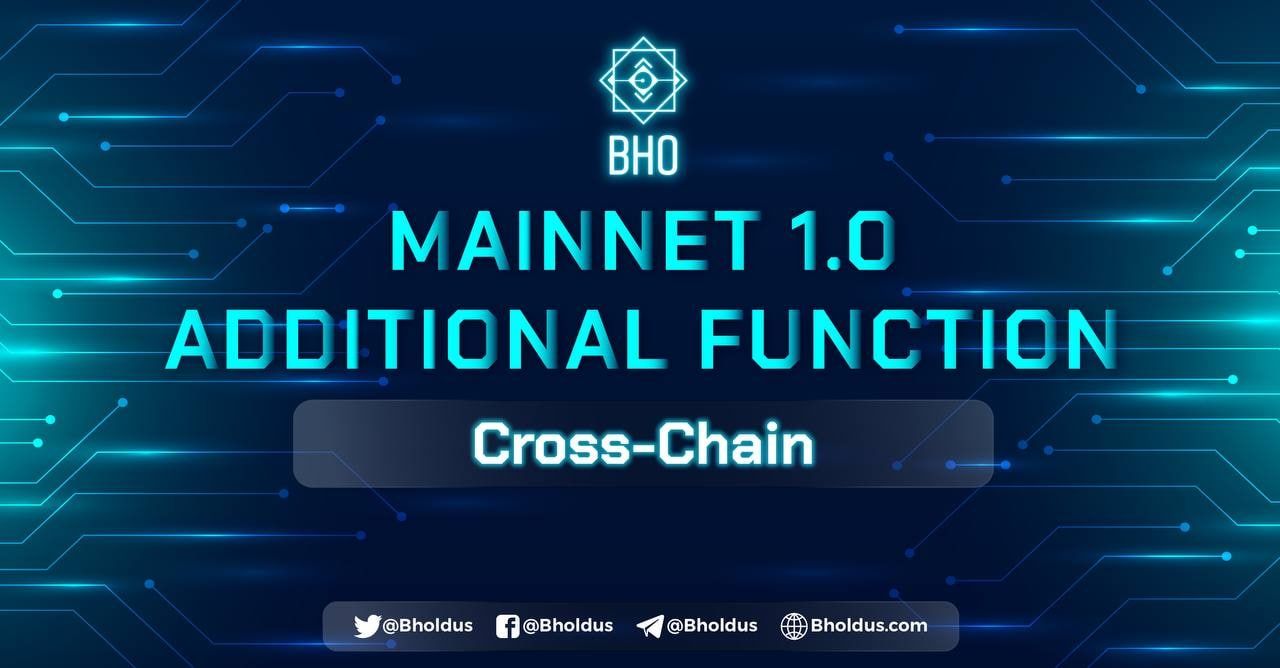- Blog
- Crypto News
- What is DMI? Overview of the DMI indicator
What is DMI? Overview of the DMI indicator
- 1. What is DMI?
- 2. What does the DMI indicator mean?
- 3. What trading signals does the DMI indicator provide?
- 4. What is the formula for calculating DMI?
- 5. Structure of DMI indicator
- 6. What is the nature of DMI Indicators?
- 6.1 ADX
- 6.2 Line DI+
- 6.3 Line DI-
- 7. How to install the DMI indicator on TradingView and Binance
- 7.1 Installing the DMI indicator on TradingView
- 7.2 Install the DMI indicator on Binance
- 8. How to trade with ADX DMI
- 9. How to identify buying and selling trends with DMI?
- 10. What should I pay attention to when using the DMI indicator?
What is DMI? The DMI is a collection of three separate indicators combined into one, including the ADX, the positive directional indicator, and the negative directional indicator. So what does this indicator mean? Let’s learn about the overview of DMI with BHO Network right in this article!
1. What is DMI?
What is DMI? DMI, the Directional Movement Index, translates as the directional price movement index. DMI is a system that helps traders determine how volatile the market trend is.
DMI is gathered from 3 sub-indicators, including:
-
ADX (Average Directional Movement): This line only measures the trend’s strength without regard to changing direction.
-
Line +DI (Directional Indicator +): line shows an uptrend.
-
Line –DI (Directional Indicator -): line represents the downtrend.
Combining the above three sub-indicators will create a complete DMI structure, and from there, we will determine both the direction of change and the strength of the trend.
2. What does the DMI indicator mean?
What does DMI mean? The DMI indicator was invented by J. Welles Wilder in the mid-1970s. The calculation formula for this indicator is quite complicated. However, thanks to technical analysis software or online charts, it becomes easy for the user.
DMI is used for many different purposes, such as determining the strength and weakness, the direction of the trend, or picking good or bad trading signals.
3. What trading signals does the DMI indicator provide?
DMI indicator provides the following trading signals: direction of the trend and the trend’s strength.
The direction of the trend: The direction of the trend is determined by two lines +DI and -DI:
-
+DI: This line represents a strong uptrend; buyers are dominating.
-
-DI: This line represents a downtrend; sellers are dominating.
Trend strength:
The ADX line determines the strength of the trend. This line ranges from 0 to 100. The more the ADX line moves towards 100, the stronger and more precise the trend is. On the contrary, if the ADX line approaches 0, the market cannot determine the direction, and the trend is not clear.
The strength of the trendline is clearly shown as follows:
-
ADX < 20: The market is not trending.
-
ADX increased from below 20: the market is starting a new trend.
-
20 <= ADX <=40: The trend is starting to increase, the market is getting stronger.
-
ADX > 40: very strong trendline.
-
ADX > 50: The trend continues to the upside.
-
ADX > 70: the trend is powerful, but this is rare.
4. What is the formula for calculating DMI?
The formula for calculating DMI is determined by comparing today’s high/low range with the previous day. Determine if today’s price is higher or lower than yesterday’s and average the results over a period.
However, the DMI system already has online charting and data analysis software, so you don’t need to pay much attention to this formula.
5. Structure of DMI indicator
What is DMI? How is the DMI index structured? As mentioned, the DMI is composed of three sub-components: moving average index (ADX), positive directional index (DI+), and negative directional index (DI-).
Looking at the picture above, we can see:
-
The blue line shows the ADX.
-
The purple line represents the DI+ line.
-
Line DI- is shown by the orange line.
6. What is the nature of DMI Indicators?
What is the nature of the DMI system? Each component in the DMI will have a different function. Let’s see the role and nature of ADX, DI+, and DI-.
6.1 ADX
The ADX line indicates whether the market is volatile or weak. Pay attention to three crucial thresholds: 20, 50, and 70.
-
ADX < 20: The market is not trending, not clear.
-
20 < ADX < 50: The market is starting a new trend.
-
50 < ADX < 70: The market is getting stronger and stronger.
-
ADX > 70: The market has a very strong uptrend.
In fact, it is very rare for any case to go above 70 unless the market has dumps /pump is mighty. The ADX is considered a lagging indicator, and investors cannot use its crossover. The ADX line is only used to determine whether the trend is strong or weak.
6.2 Line DI+
The DI+ line is an indicator representing an ascending trend. For this indicator, the 20 threshold is the most important. The trend is bullish only when DI+ rises from 20 and above. The higher this indicator, the stronger the trend. However, there are cases when the DI+ line goes down, but it doesn’t mean that the price has fallen.
6.3 Line DI-
In contrast to DI+, DI - is an indicator representing a downtrend. Similar to DI+, 20 is an important milestone. The trend line is identified as bearish when the DI- is at 20 and goes up.
The higher the DI-index, the stronger the downtrend is. However, you also note that this is not absolute. There are cases where the DI- goes down, but the price is unlikely to go up.
7. How to install the DMI indicator on TradingView and Binance
So how to install the DMI indicator on TradingView and Binance? When installing any application, you need to register an account and then log in. In this section, we will learn how to install DMI on two platforms, TradingView and Binance.
7.1 Installing the DMI indicator on TradingView
First, you register an account on TradingView. Click on “Chart” at the homepage to enter the analytical chart.
Then you continue to click the Fx icon in the toolbar. In the search box, enter “DMI”. Then a series of search results appear. Click on the first search result. A new interface will appear, and that is the interface you have installed DMI successfully.
7.2 Install the DMI indicator on Binance
Binance is the world’s largest centralized cryptocurrency exchange. How to register as well as verify identity at this exchange is quite complicated. You must log in and go to the chart section like TradingView, click on the timeframe, and show “Technical Indicators”.
Usually, Binance will have two default indicators, MA and VOL. This is not necessary. You can remove them. Then click on the “Additional” section and the DMI box to install. So it’s done!
8. How to trade with ADX DMI
After already knowing what DMI is, how to install DMI, then how to deal with them. There are three trading methods on DMI: trading with DI+ and DI-, used to remove the noise signal of the MA, combined with RSI, Bollinger Bands, and Stoc.
Trading with DI+ and -DI
DMI forecasts us the following buying and selling decisions:
-
Buy forecast: when the DI+ line crosses and moves up towards DI-
-
Forecast should sell: when the DI- line intersects the DI+ line and goes down
When using a cross-cut, you need to be aware of their deviation. At this time, you should combine with the ADX line to have more accuracy about the current trend.
Used to eliminate the noise signal of the MA line
In markets with a clear trend, the MA line works very well. However, when the market has no clear trend, the MA forecast is inaccurate. When the price is sideways, the MA will have noisy signals. Now you should combine with DMI to filter those noise signals.
Combined with RSI, Bollinger Bands, Stochastic.
When the market has no clear trend, you can combine with RSI and Bollinger Band to trade with price fluctuations in a particular range.
9. How to identify buying and selling trends with DMI?
Identifying trends is important in cryptocurrency trading. This helps investors choose a suitable investment method. To determine the market trend, you must combine three components: DI+, DI-, and ADX lines. The condition is that the ADX line must be above 20 to confirm that the market is trending.
-
Buy forecast: DI+ line crosses DI- and is above DI-, ADX line is above 20.
-
Sell forecast: DI+ line cuts DI- and is below DI-, ADX line is above 20.
Another way investors often use is to find the beginning of a new trend in the market. They will pay attention to whether the ADX line crosses below to above the 20 levels. If so, then there is no clear trend in the market after some time, the more accurate this forecast is.
Besides, the ADX line is also determined to find signs of trend reversal. When the ADX line is above DI+ and DI- and then suddenly drops. That is a sign that ADX is about to reverse the trend (this means that ADX is up or down and does not determine the next movement of the price line).
10. What should I pay attention to when using the DMI indicator?
The DI+ and DI- lines may continuously cross, so investors should pay attention to the ADX line when conducting trades. ADX represents the trend strength of the market, and an experienced investor will want to trade in a healthy market.
The ADX Average Directional Index is part of the directional movement indicator system. The direction of the DMI should combine with the ADX trend strength indicator. Whether combined with ADX or not, deviation still occurs.
Reading and crossovers between the DI+ and DI- lines do not necessarily reflect all that will happen. A crossover is possible, but a failure to respond could still result in a loss.
The lines also appear to crisscross each other, leading to many signals but not identifying the price trend.
To limit this, you should take larger trades based on the long-term chart or in combination with the ADX indicator to help isolate strong trends.
The above is all the information regarding the question “What is DMI?”. BHO Network has also guided you on installing and doing transactions on DMI. This indicator will help traders a lot during trading. However, this indicator is not correct for all cases. Therefore, it is the job of traders to be alert and flexible in all situations.
Published on August 10, 2022
Tagged topics







